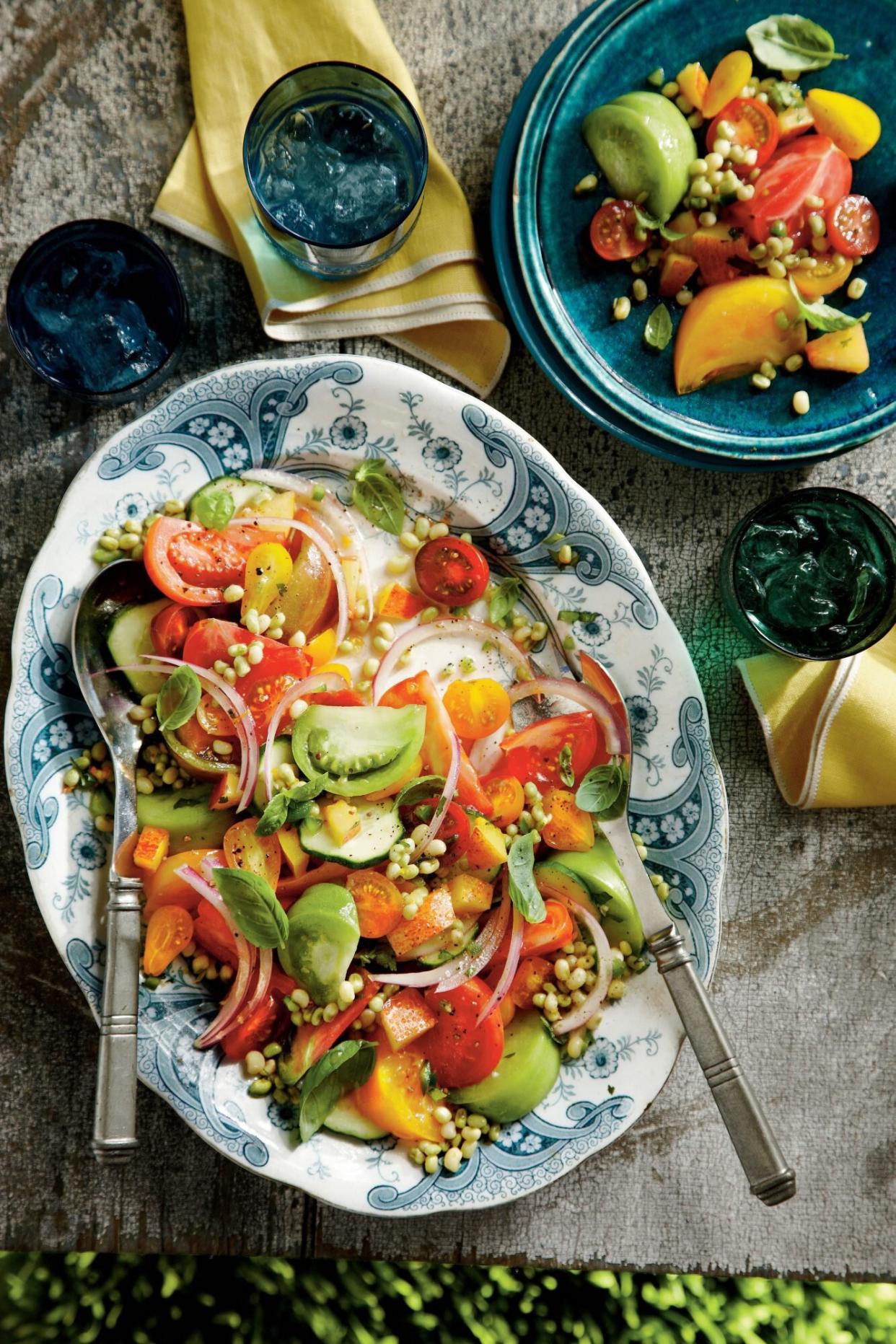Why We Love Lady Peas And Their Oh-So-Pretty Name

Jennifer Davick
If you call the South home, you know peas aren't those little green balls. Those are English peas. Southern peas, also known as field peas or cowpeas, are actually legumes. These hearty, heat-loving beans come in all sorts of varieties (zipper, crowder, cream, black-eye, pink-eye), but one pea is king. Or should I say, queen. Lady peas, a variety of cream peas, are prized above all others for their sweet flavor, tender texture, and pretty color—they remain pale green or yellowish-white even when cooked. We love using them in fresh, summery salads (like the tomato salad topped with Lady Pea Salsa above) or other simple dishes where they can really shine.
Unlike other types of field peas, lady peas produce a clear, not cloudy, cooking liquid, which some cooks, like our own test kitchen professional Pam Lolley, prefer. "They're a bit more expensive but their flavor—and clear potlikker is worth every penny," she says. When buying them in the shell, look for flexible, plump pods.
According to Victory Seeds, lady peas are an old Southern heirloom that dates back to the early 1800s, and one of the first commercially available varieties. The name likely comes from the pea's small size and delicate flavor.
WATCH: 30 Foods Only Southerners Eat
Summer is primetime for fresh lady peas, but you can also buy them dried or frozen year-round. Fresh peas freeze well for up to six months, if stored the right way. To freeze, wash shelled peas and blanch in boiling water for 2 minutes. Drain the peas and plunge immediately in ice water. When the peas are cool, drain them well. Package in storage containers, leaving 1/2-inch headspace, or in ziplock plastic freezer bags, removing as much air as possible. Don't thaw frozen peas before cooking.
If you're lucky enough to get your hands on some fresh lady peas, put them to good use in one of these ultra easy, oh-so-summery field pea recipes.

